Clothing Materials
Material Categories
- Basic Clothing Materials: Base Material, Translucent Material, Mask Material
- Special Clothing Materials: Fur Material, Stocking Material
Basic Clothing Materials
- Basic clothing materials are categorized based on their transparency effects. All three types share identical parameters except for transparency handling:
- Base Material: Alpha transparency not supported.
- Mask Material: Supports black-and-white alpha transparency (gray values are truncated). No outline effects in-game.
- Translucent Material: Supports gradient alpha transparency (gray values preserved). No outline effects in-game.
- Example effects:
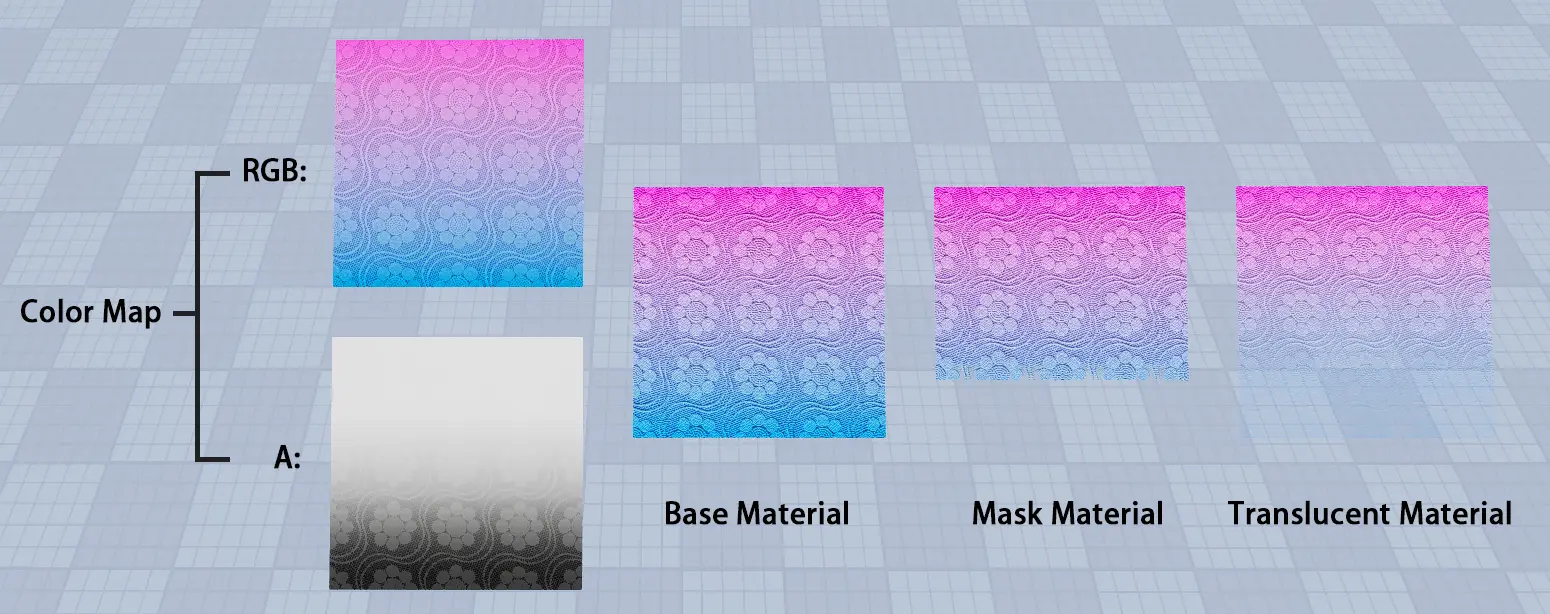
Textures
All basic clothing materials follow the PBR workflow. Textures should be packed into specific channels for performance optimization:
Color Map:
- RGB: Color information.
- Alpha: Transparency (black = fully transparent, white = opaque). Requires Mask/Translucent Material.
Normal Map: DirectX
- RGB: DirectX-style normal data.
MRAE Map:
- R=Metallic
- G=Roughness
- B=Ambient Occlusion
- A=Emissive
Reference examples:
| Color Map | RGB | A | ||
|---|---|---|---|---|
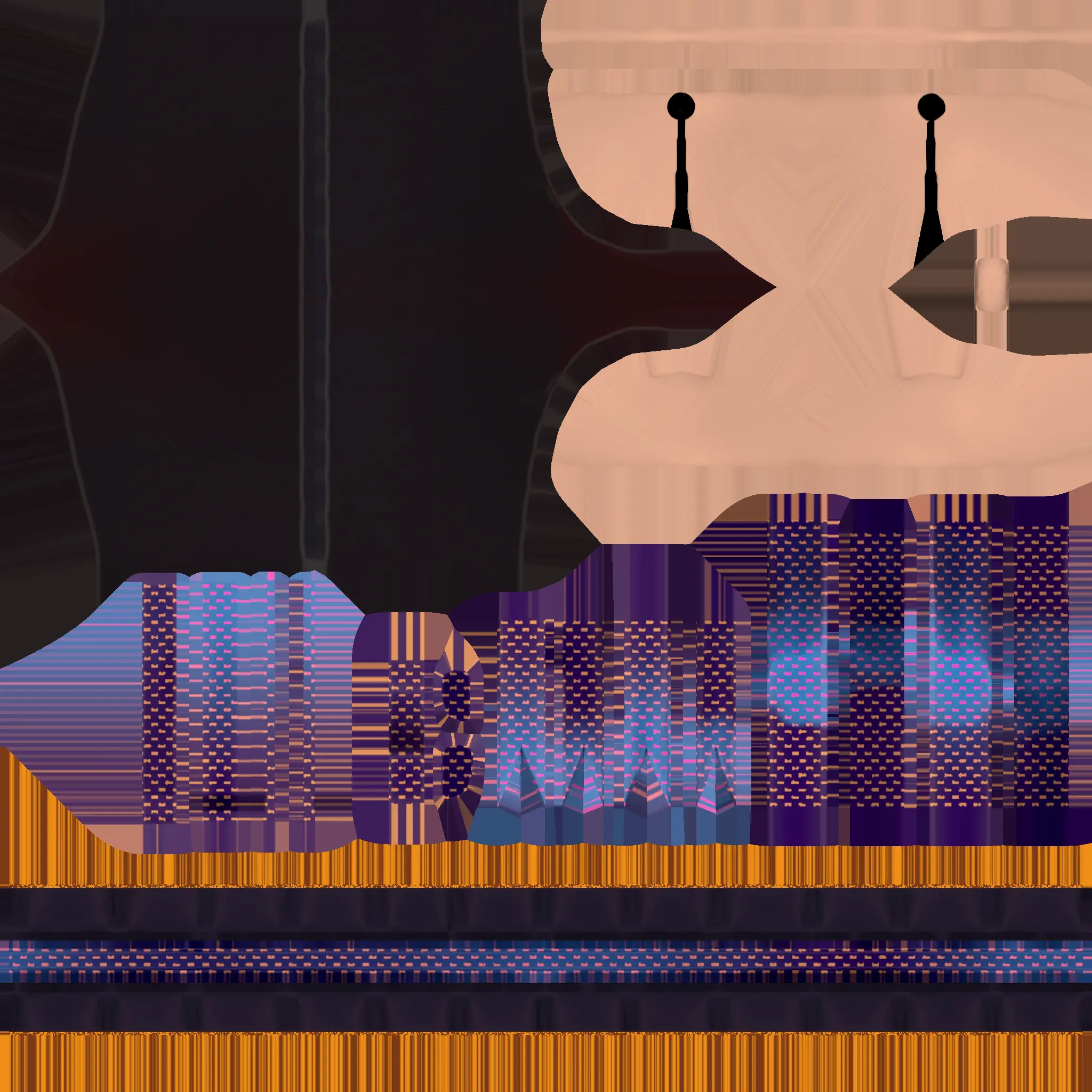 | 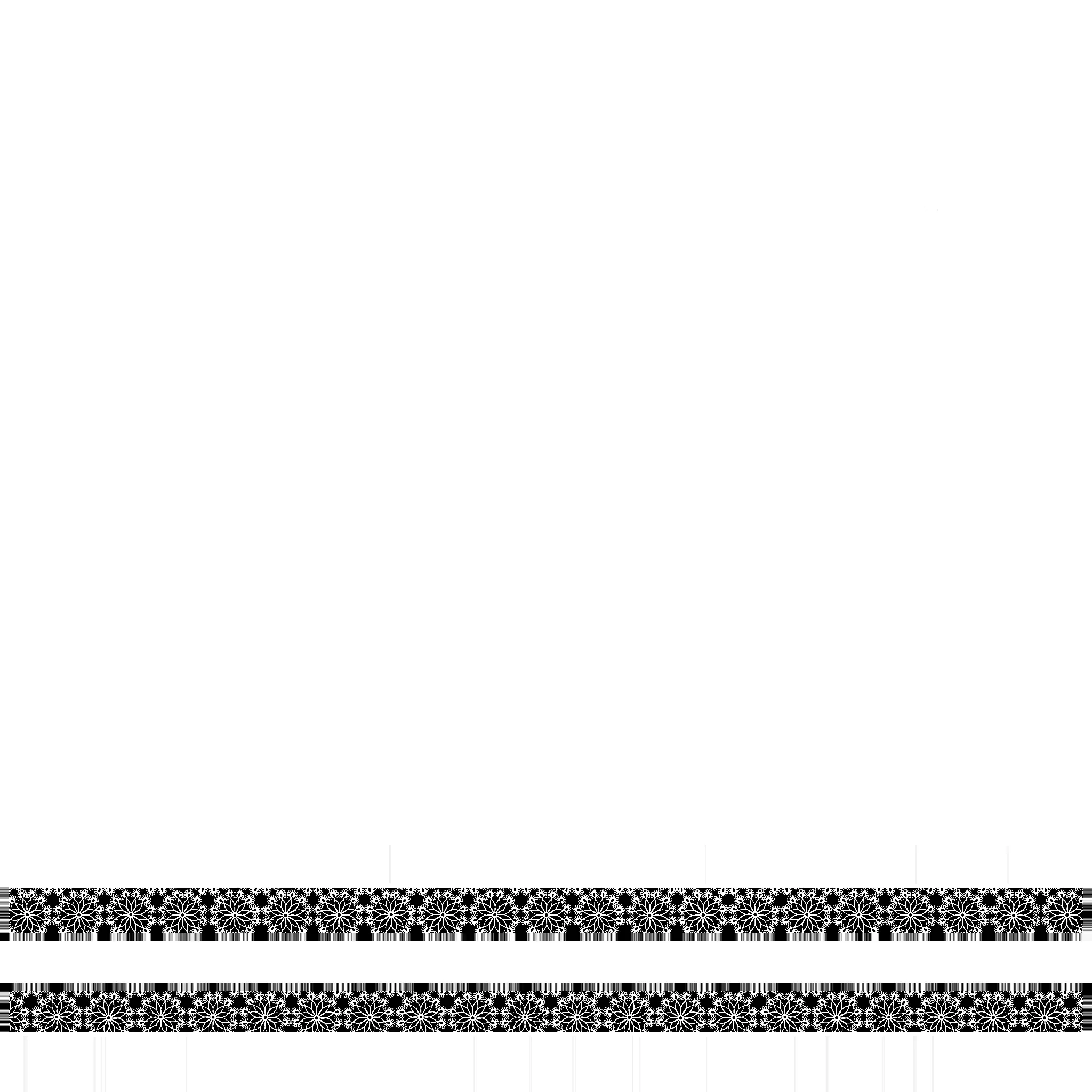 | |||
| Normal Map | RGB | |||
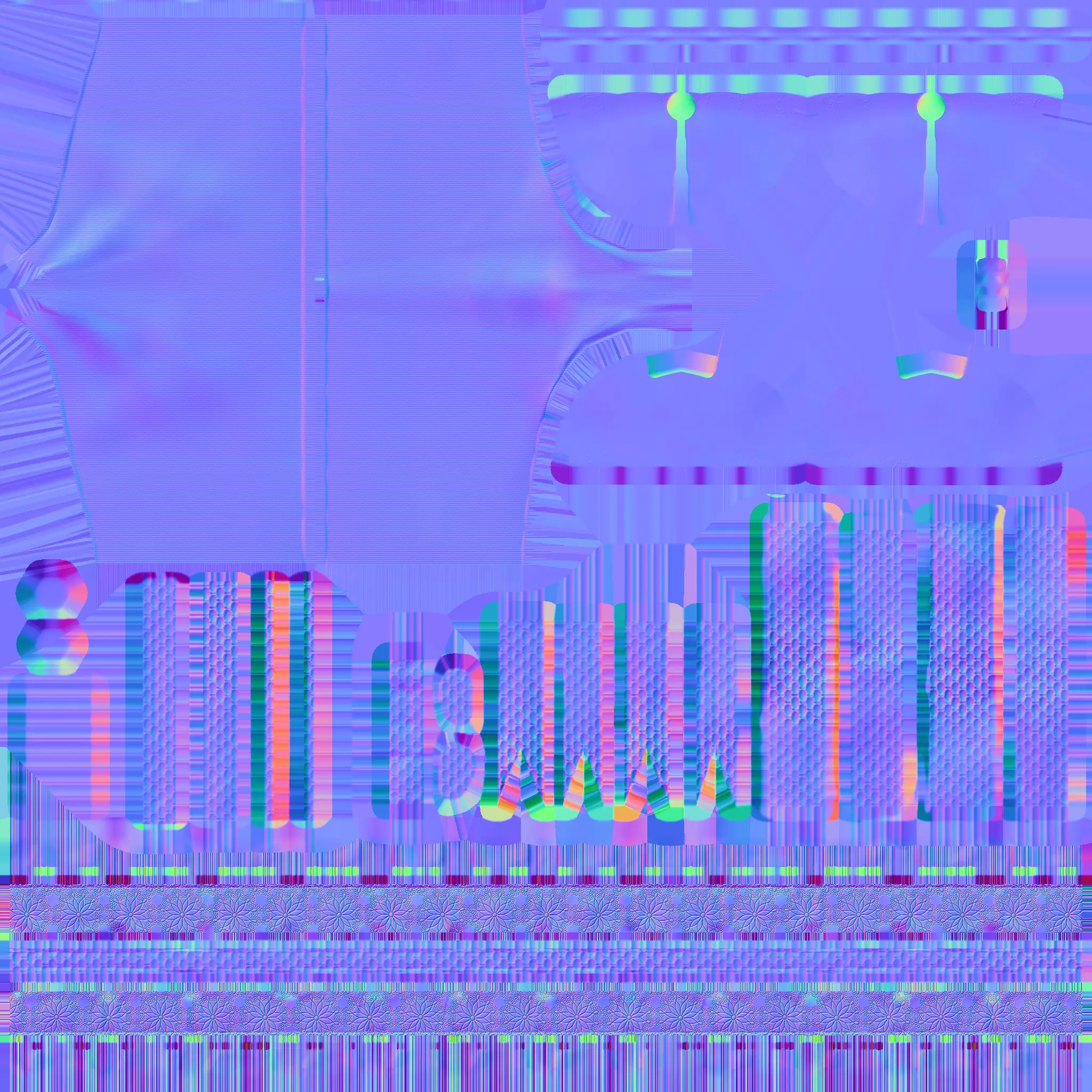 | ||||
| MRAE Map | R | G | B | A |
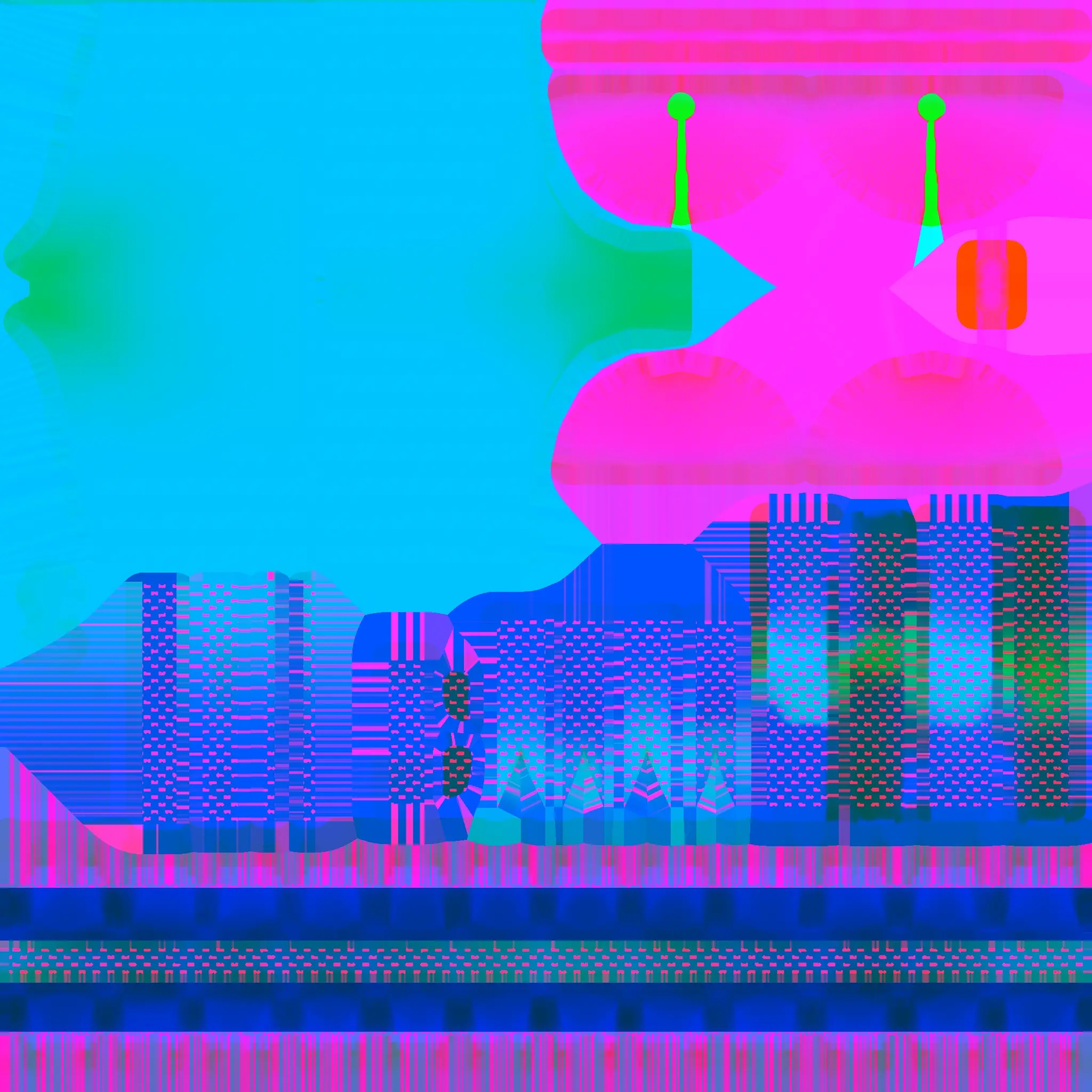 | 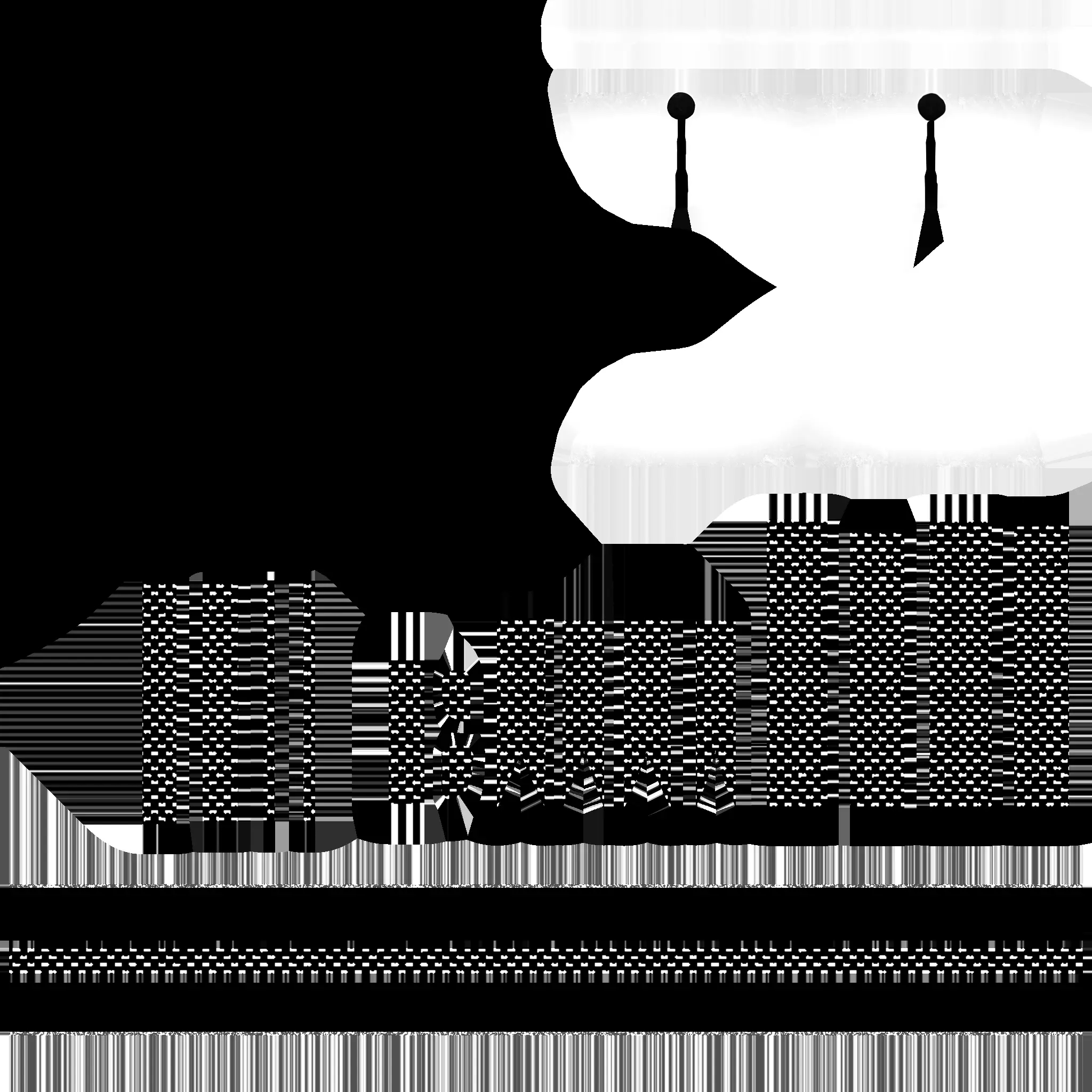 | 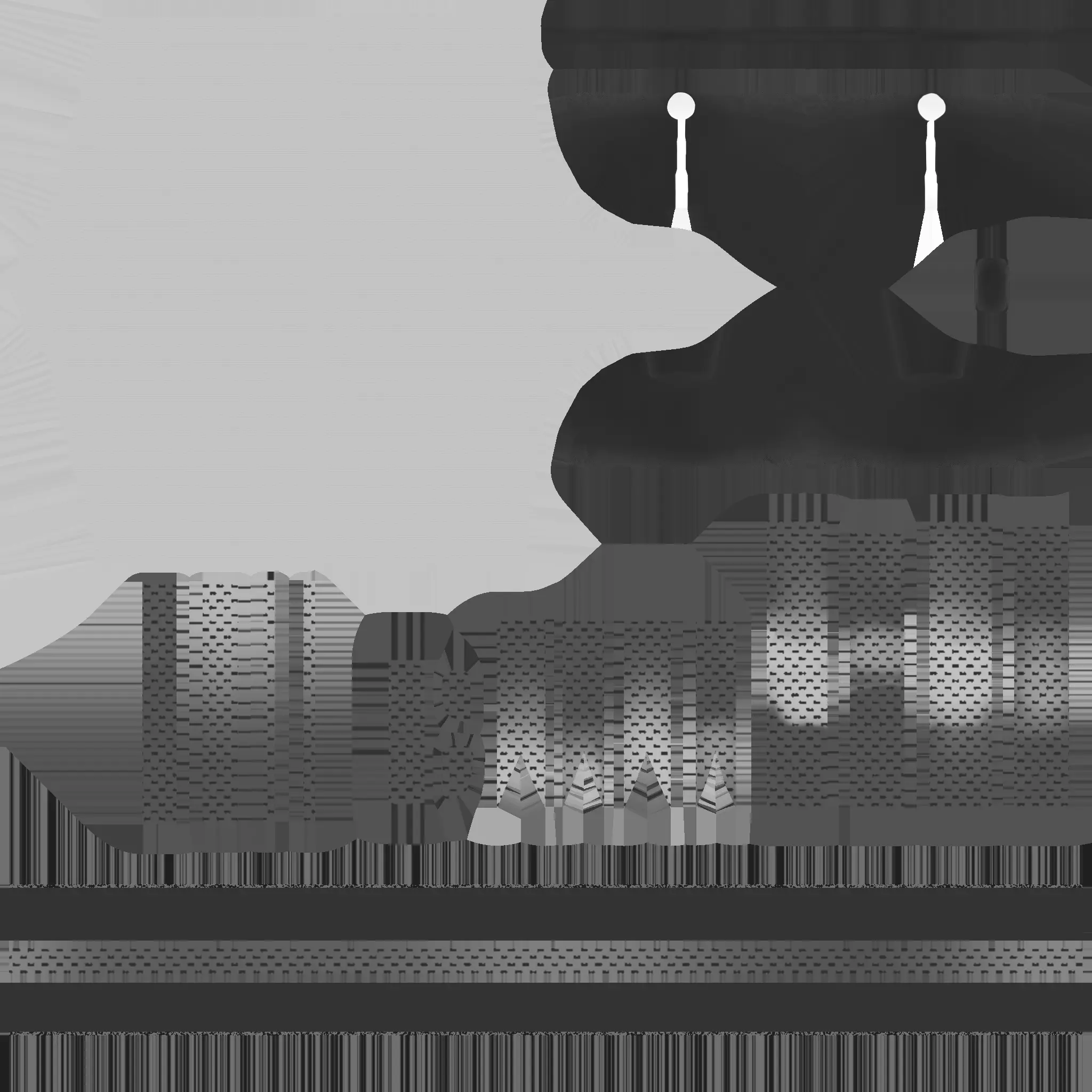 | 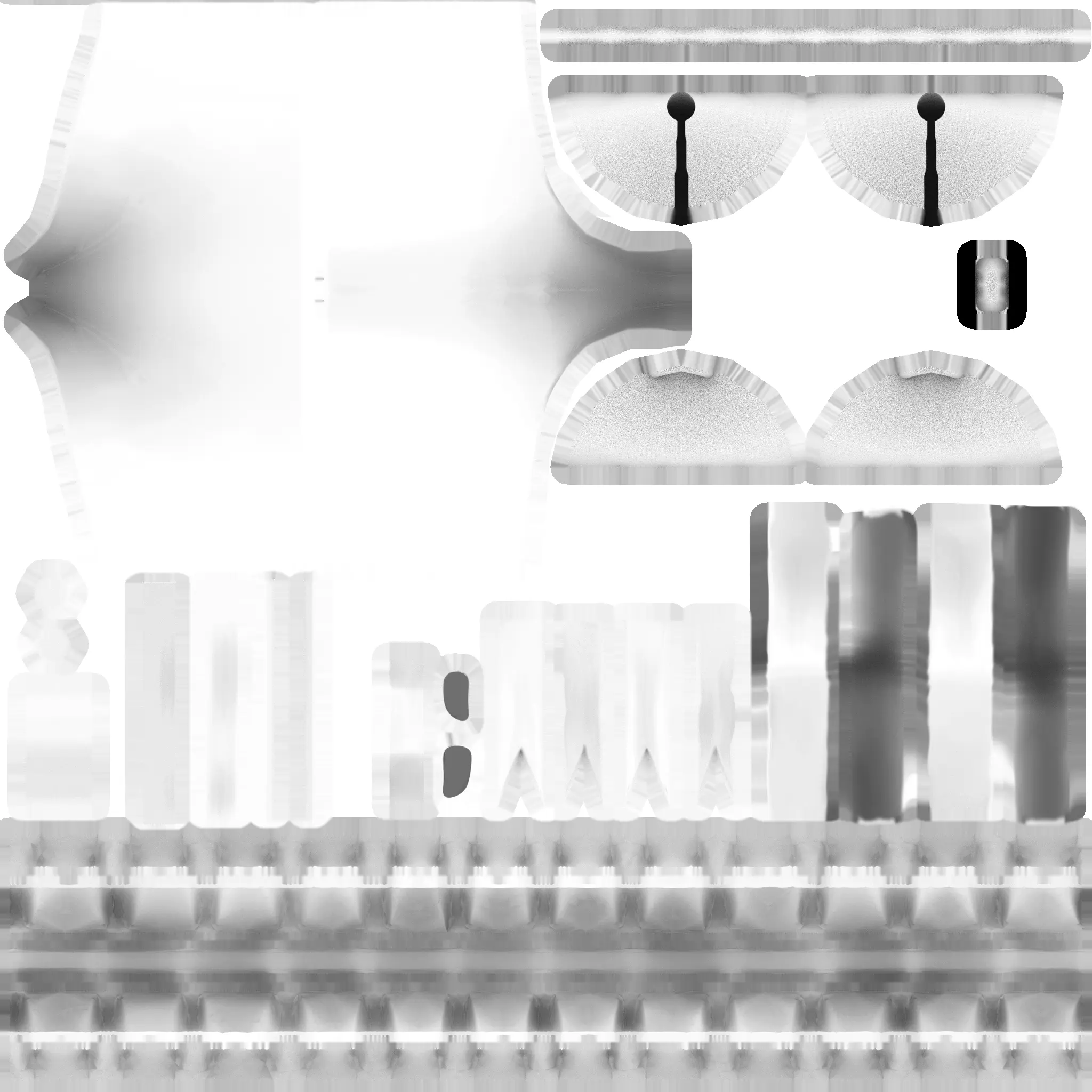 |  |
Material Parameters
- In addition to basic textures, materials also provide effect parameter adjustment functions
- The default parameters of the material can meet the needs of most models. Generally, only textures need to be made without excessive parameter adjustments.
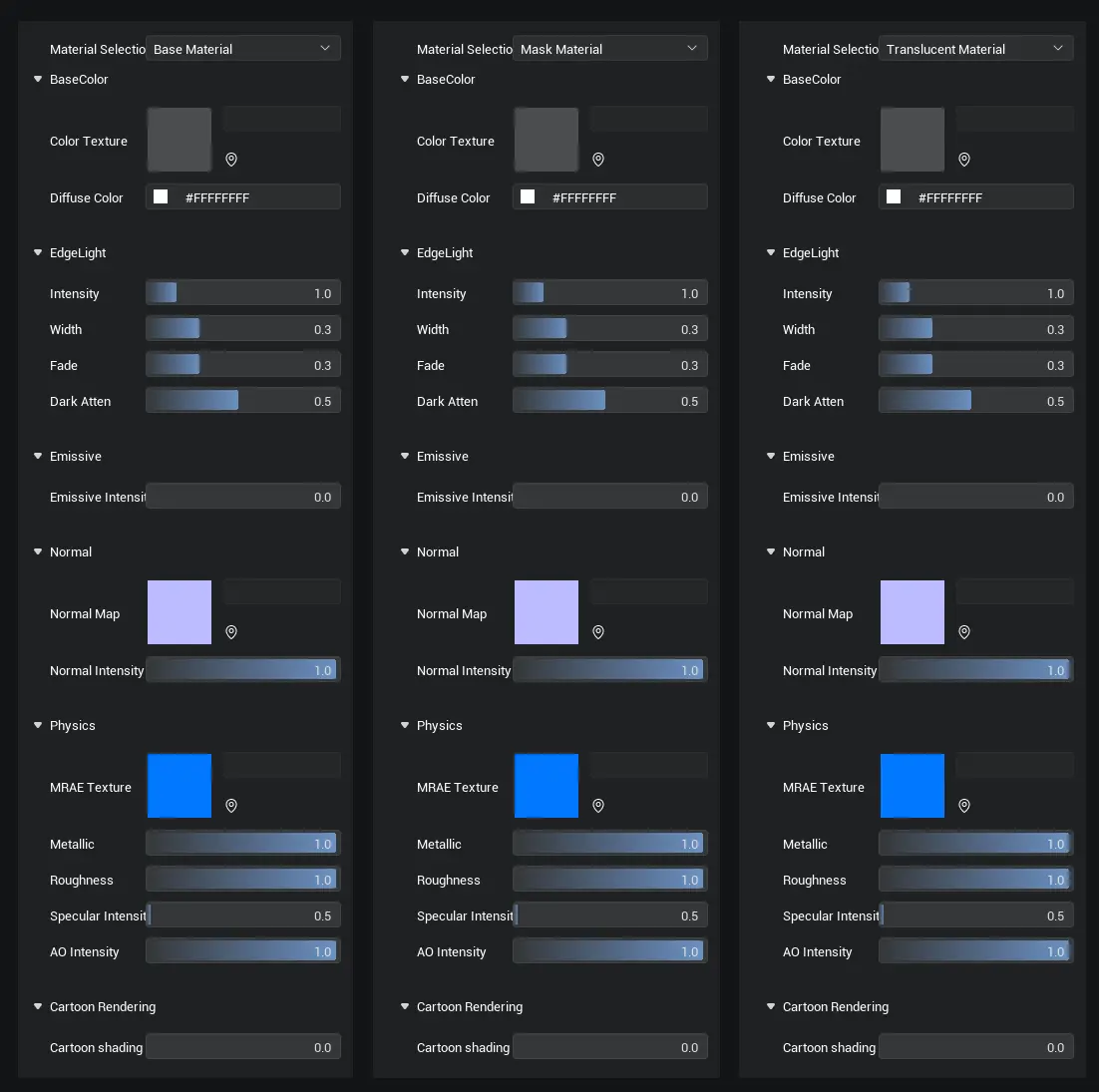
- Diffuse Color: Overall color adjustment.
- Edge Highlight:
- Intensity: Adjusts the brightness of the edge highlight. Higher values increase brightness.
- Width: Adjusts the width of the edge highlight. Higher values widen the edge.
- Softness/Hardness: Adjusts the softness of the edge transition. Lower values make the transition harder. Note: A value of 0 may cause anomalies.
- Falloff Strength: Adjusts the decay range of the edge highlight. Higher values increase falloff.
- Emissive:
- Emissive Intensity: Adjusts the strength of emissive glow. Higher values increase intensity. The emissive color is derived from the texture's RGB channels. The emissive regions are determined by the Alpha channel of the MRAE map.
- Normal:
- Normal Strength: Globally adjusts the normal map intensity. A value of 1 applies the full texture normal strength, while 0 disables the normal effect.
- Physical Properties:
- Metallic: Adjusts the metallic effect based on the R channel of the texture. A value of 1 fully applies the texture's metallic map, while 0 removes metallic effects.
- Roughness: Adjusts surface roughness based on the G channel of the texture. A value of 1 fully applies the texture's roughness map, while 0 removes roughness effects.
- Specular Intensity: Adjusts the brightness of specular highlights. Lower values reduce highlight intensity.
- AO Intensity: Adjusts ambient occlusion strength based on the B channel of the texture. A value of 1 fully applies the AO map, while 0 disables AO effects.
- Cel Shading:
- Cel-Shaded Shadows: Controls shadow hardness. A value of 1 applies cel-shaded shadows with no transition effects. A value of 0 enables realistic shadows with smooth transitions.
Parameter Effects
Special Clothing Materials:
Fur Material
- Simulates fur effects.
- Supports color customization.
Textures
The length of the fur is controlled by the grayscale values in the Alpha channel of the Color Map.
- Color Map:
- RGB: Base color.
- Alpha: Fur length (white = longest, black = shortest).
- The corresponding relationships and effects are as follows:
| Color Map | RGB | A |
|---|---|---|
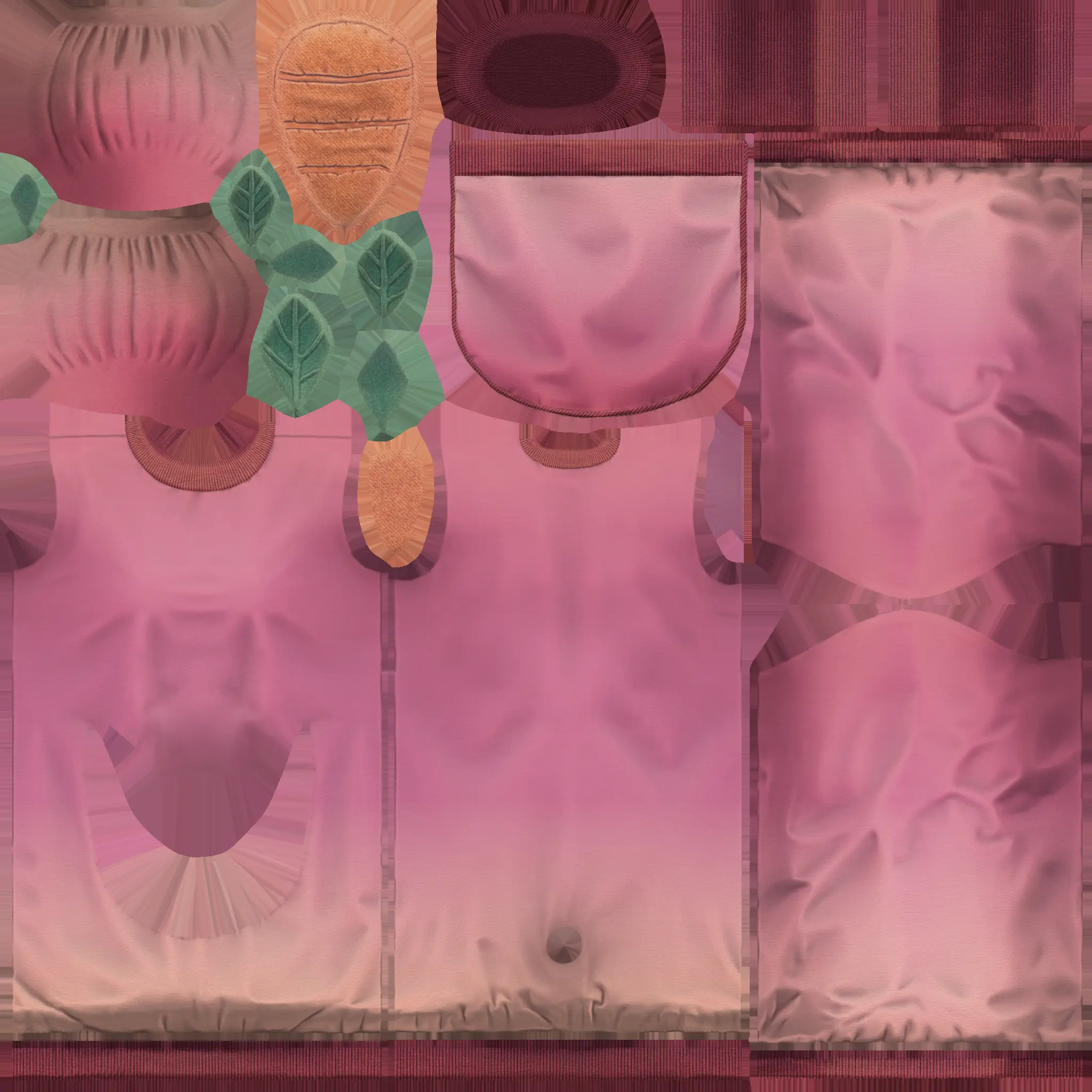 | 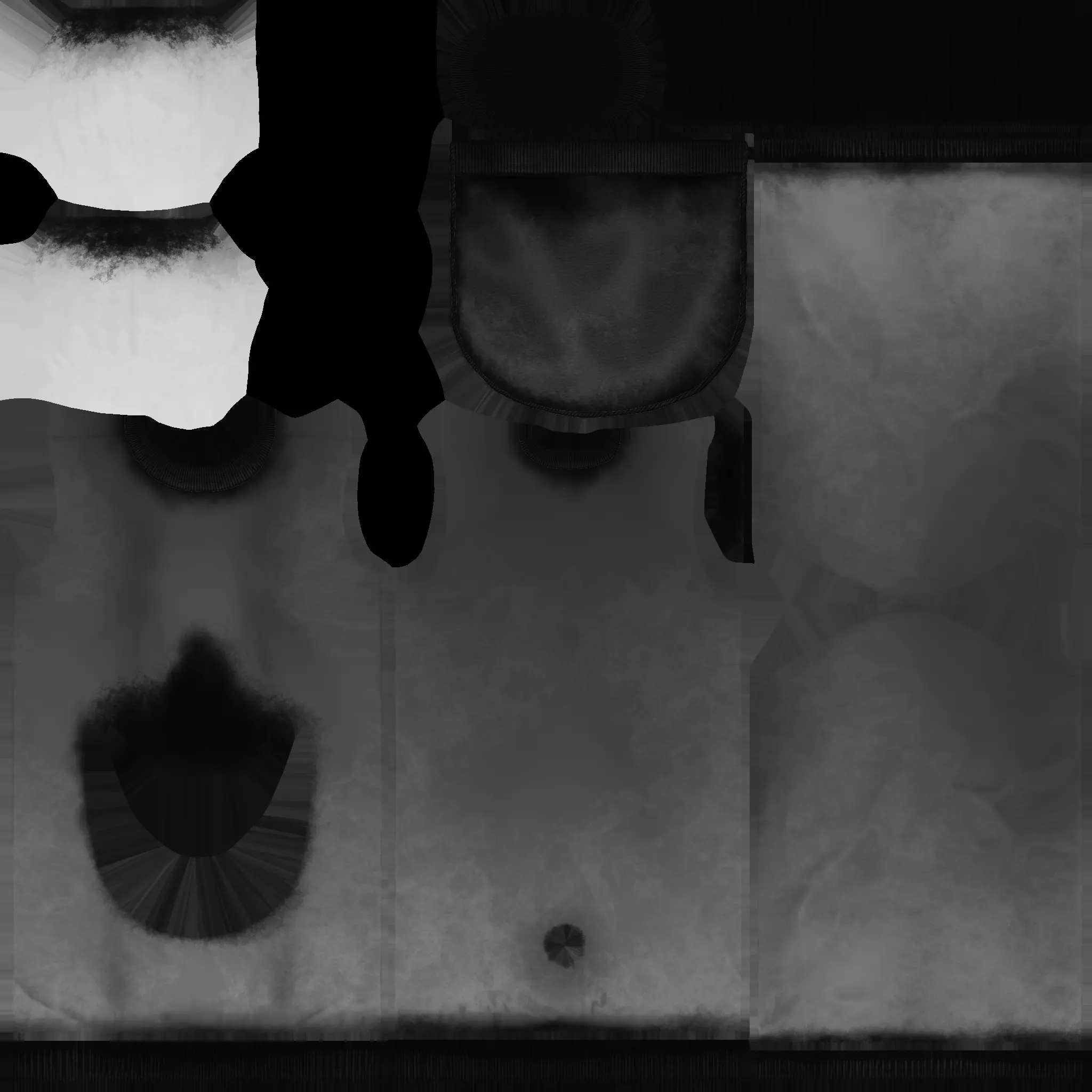 |
Material Parameters
- In addition to the basic textures, the material also provides parameter adjustment functions for effects.
- The default parameters of the material can meet the needs of most models. In general, only the creation of textures is required, and excessive parameter adjustments are unnecessary.
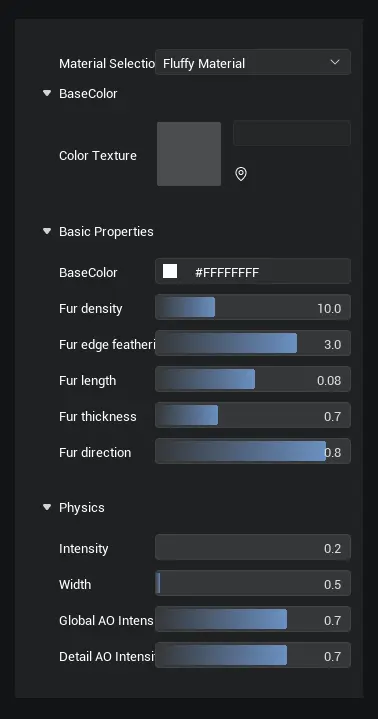
- Base Properties:
- Diffuse Color: Adjusts the overall color tone.
- Fur Density: Adjusts the overall density of the fur. Higher values result in denser fur.
- Fur Edge Softness: Adjusts the softness of the fur edges. Higher values make the edges softer.
- Fur Length: Adjusts the overall length of the fur. Higher values result in longer fur.
- Fur Thickness: Adjusts the overall thickness of the fur. Lower values make the fur thicker.
- Fur Direction: Adjusts the overall orientation of the fur. Positive values follow gravity, while negative values oppose it.
- Physical Properties:
- Specular Intensity: Adjusts the intensity of specular highlights. Higher values increase the highlight effect.
- Specular Width: Adjusts the width of specular highlights. Higher values widen the highlight area.
- Global AO Intensity: Adjusts the strength of ambient occlusion. Higher values increase the AO effect.
- Detail AO Intensity: Adjusts the strength of ambient occlusion for finer details. Higher values increase the AO effect.
Material Parameter Effects
Stocking Material
- Specifically designed for stockings and similar items, including but not limited to various types of socks, skin-tight clothing, and full-body sheer tights.
- The UVs of the stocking model must align with the UVs of the base skin model. By combining transparency textures, the effect of the skin showing through the inner layer of the stockings can be achieved.
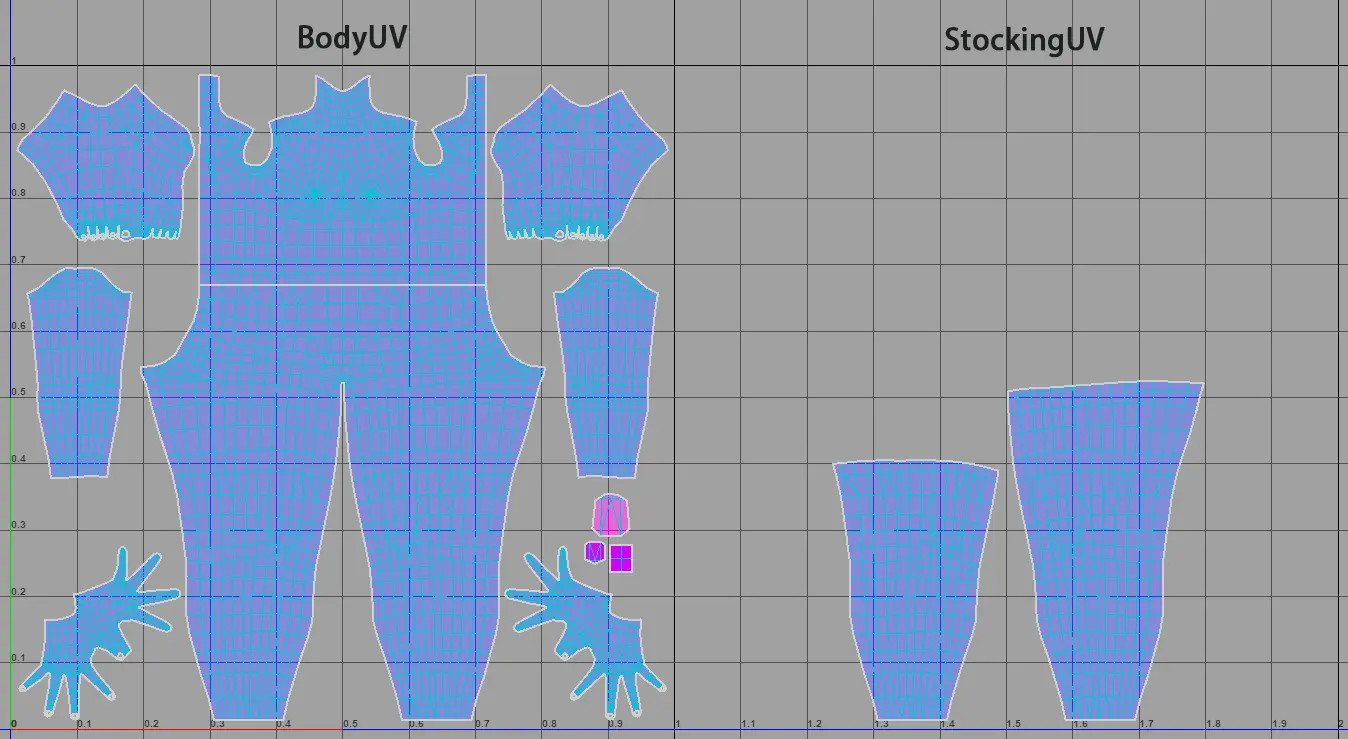
- For non-skin-tight clothing where a sheer effect is not required, please use regular clothing materials. For example, silk ribbons, etc.
- Items using the stocking material support color customization functionality.
Textures:
- The transparency of the stockings is controlled by the grayscale values in the Alpha channel of the Color Map.
- Color Map:
- RGB channels: Draw color information.
- Alpha channel: Controls the transparency of the stockings. Black represents full transparency (showing skin color), while white represents full opacity.
- The corresponding relationships and effects are as follows:
- Color Map:
| Color Map 1 | RGB | A |
|---|---|---|
 | 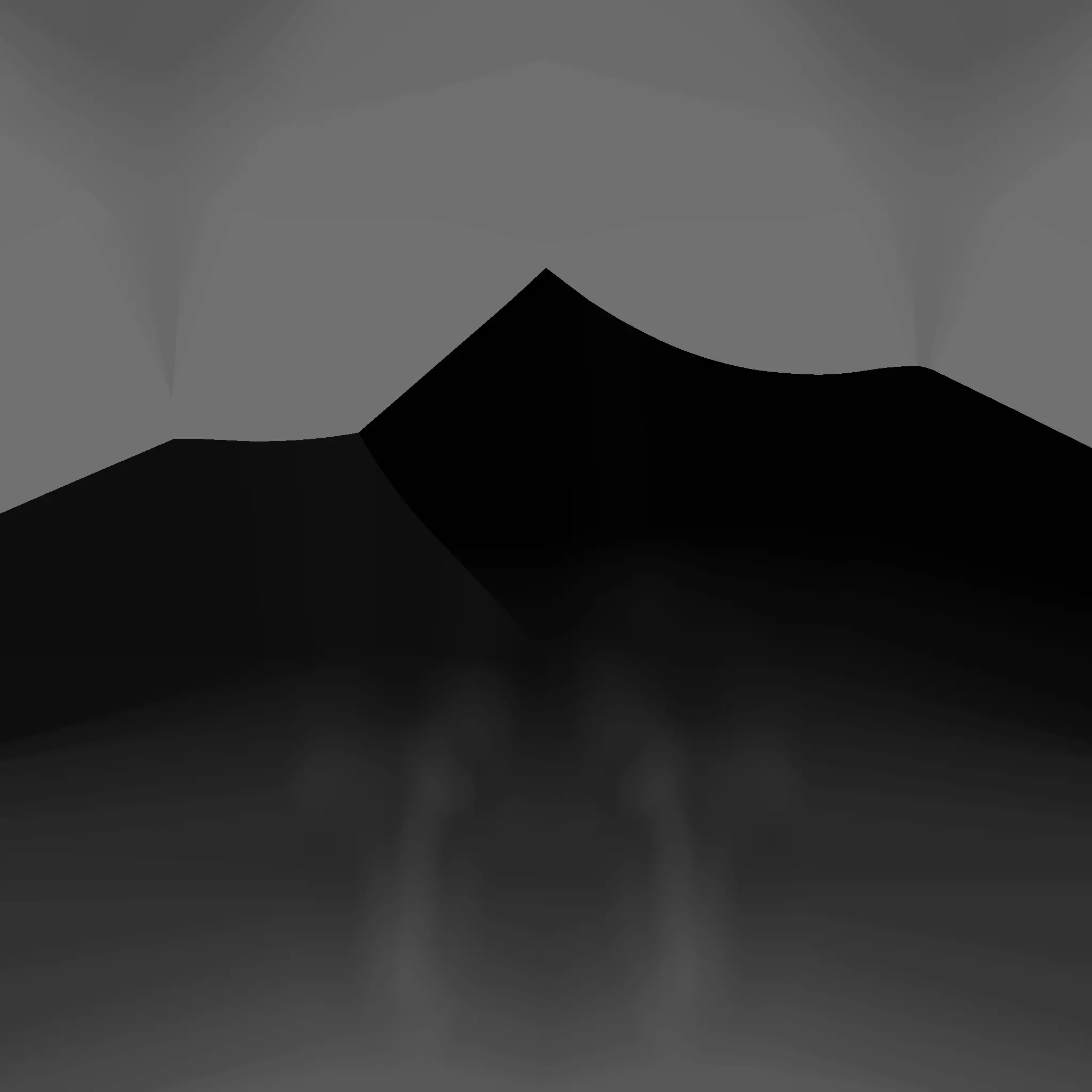 | |
| Color Map 2 | RGB | A |
 | 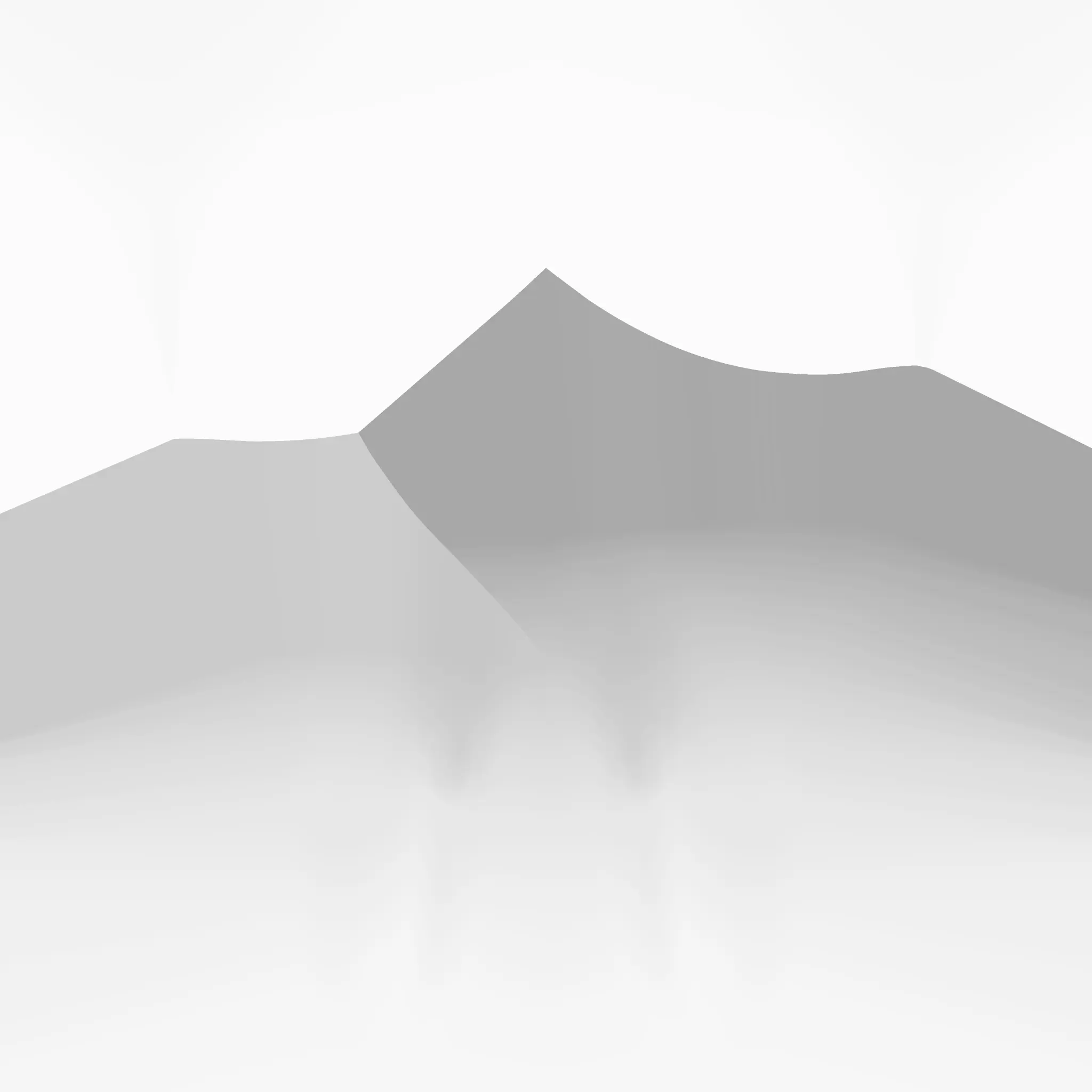 |
- A comparison of the effects of transparency on stockings: In the video, the model on the left uses Color Map 1, while the model on the right uses Color Map 2.
Material Parameters
- In addition to the basic textures, the material also provides parameter adjustment functions for effects.
- The default parameters of the material can meet the needs of most models. In general, only the creation of textures is required, and excessive parameter adjustments are unnecessary.
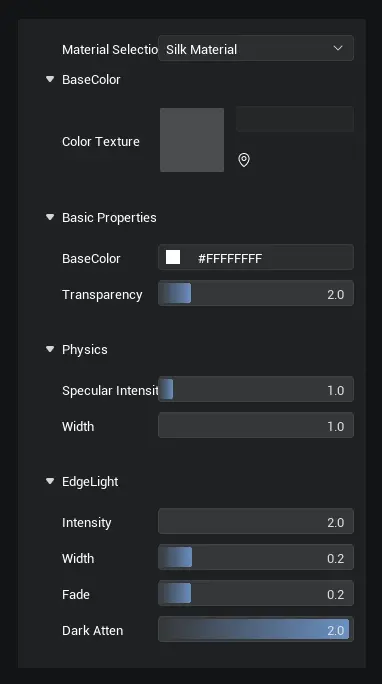
- Base Properties:
- Diffuse Color: Adjusts the overall color tone.
- Transparency: Adjusts the curvature of transparency. Higher values make the material more opaque, while lower values make it more transparent.
- Physical Properties:
- Specular Intensity: Adjusts the intensity of specular highlights. Higher values increase the highlight effect.
- Specular Width: Adjusts the width of specular highlights. Higher values widen the highlight area.
- Edge Highlight:
- Intensity: Adjusts the brightness of the edge highlight. Higher values increase brightness.
- Width: Adjusts the width of the edge highlight. Higher values widen the edge.
- Softness/Hardness: Adjusts the softness of the edge transition. Lower values make the transition harder. Note: A value of 0 may cause anomalies.
- Falloff Strength: Adjusts the decay range of the edge highlight. Higher values increase falloff.
 Editor Doc
Editor Doc